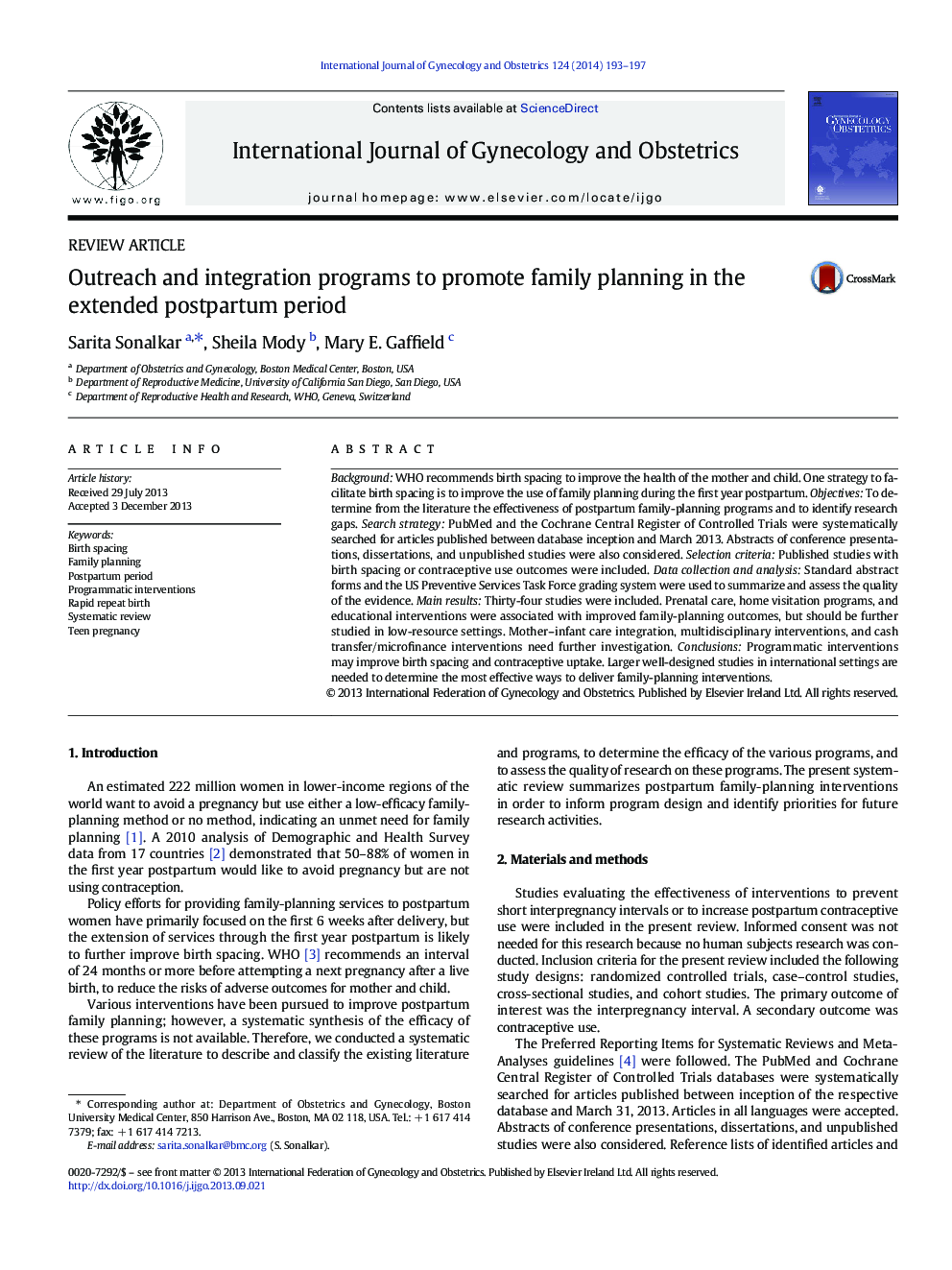| Article ID | Journal | Published Year | Pages | File Type |
|---|---|---|---|---|
| 3954184 | International Journal of Gynecology & Obstetrics | 2014 | 5 Pages |
BackgroundWHO recommends birth spacing to improve the health of the mother and child. One strategy to facilitate birth spacing is to improve the use of family planning during the first year postpartum.ObjectivesTo determine from the literature the effectiveness of postpartum family-planning programs and to identify research gaps.Search strategyPubMed and the Cochrane Central Register of Controlled Trials were systematically searched for articles published between database inception and March 2013. Abstracts of conference presentations, dissertations, and unpublished studies were also considered.Selection criteriaPublished studies with birth spacing or contraceptive use outcomes were included.Data collection and analysisStandard abstract forms and the US Preventive Services Task Force grading system were used to summarize and assess the quality of the evidence.Main resultsThirty-four studies were included. Prenatal care, home visitation programs, and educational interventions were associated with improved family-planning outcomes, but should be further studied in low-resource settings. Mother–infant care integration, multidisciplinary interventions, and cash transfer/microfinance interventions need further investigation.ConclusionsProgrammatic interventions may improve birth spacing and contraceptive uptake. Larger well-designed studies in international settings are needed to determine the most effective ways to deliver family-planning interventions.
